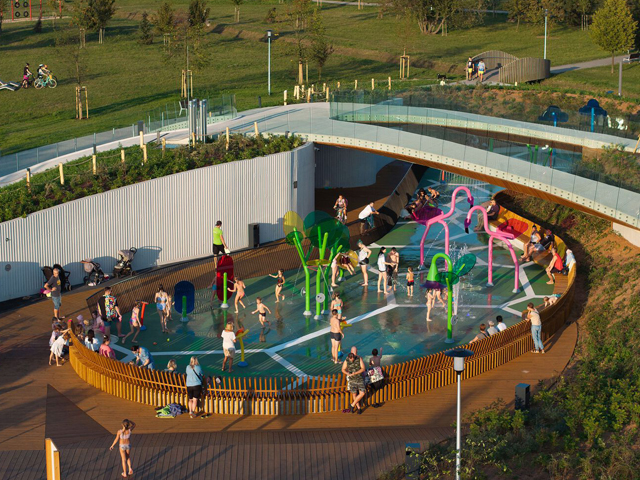INSIGHTS ON USING TIMBER IN PLAY STRUCTURES
16 Jul 2024
Timber has remained a construction staple for thousands of years and is still a favourite to this day. It is a renewable natural resource with a life-cycle balance that outperforms other building materials like steel or concrete. It offers design flexibility, making it one of the most widely used materials, especially for structures exposed as architectural features.

Timber is a lightweight product that has superior stability and strength. It can withstand harsh conditions and lasts over the seasons. Over the years, timber has proved to be an excellent material for adventure+ to create playground equipment for children.
Apart from the qualities mentioned above, timber is a good material for playgrounds due to its aesthetic appeal, flexibility to fit different shapes and spaces, and seamless fit in outdoor settings. Wooden climbing frames and timber play equipment also help fulfil the requirements of a playground in being sustainable, engaging, safe and still challenging. 
With such advantages, it’s no surprise that more and more designers and project managers choose timber as the material of choice for building outdoor playgrounds. 
WHY TIMBER
- Connection to Nature | When play areas utilise timber structures, it provides children with a certain connection to nature.
- Aesthetic Appeal | Timber-made play equipment looks engaging to children. Wooden structures, such as tree houses and towers mimic the challenging, exciting appeal of the outdoors.
- Flexibility in Design | Flexibility allows for designs with large or irregular platform decks, which are excellent for improved traffic flow, accommodation of a large number of users and providing for the needs of users with limited mobility.
- Greener Solution | Sustainable yield harvesting requires planting at 2:1 or 3:1 ratios which means that going along with usage, there is an increasing level of raw material resource.

Read the full article from adventure+ to learn more!

MORE NEWS

HOW PLAYCO PLAYGROUND MARKINGS ENHANCE PLAY, LEARNING AND SAFETY

CHINA'S NEWEST ARIA: THE HUACHIAO VIBRANT SPORTS PARK

5 IDEAS HOW TO USE PLAY SPACE SLOPES TO YOUR ADVANTAGE

HOW TO ENSURE YOUR DESIGN COMPLEMENTS THE SURROUNDING ARCHITECTURE

PLAYGROUND CELEBRATING ASH BARTY A GRAND SLAM

